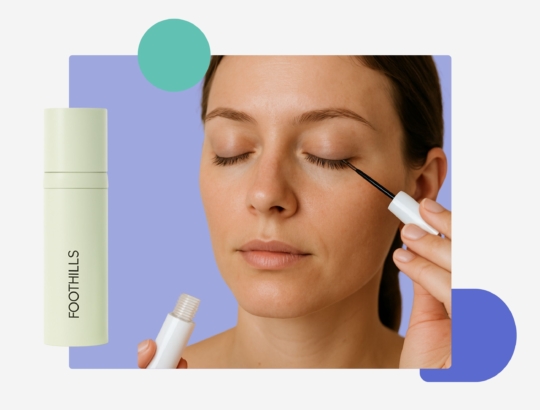When can Latisse® (bimatoprost) be covered by health insurance?
Dr. Aditi Shende, board-certified dermatologist, explains when bimatoprost is eligible for health insurance coverage and how its use for medical conditions differs from cosmetic applications.
Table of Content:
What is bimatoprost? | What is bimatoprost used for? | When is bimatoprost covered by insurance? | The cost of bimatoprost without insurance? | Get prescription
Our commitment to producing high-quality content:
The information presented in this article is based on scientific research and the professional advice of our Content Medical Reviewers, who are experts in the field of Dermatology. How we write our content →
What is Latisse® (bimatoprost)?
Latisse® (also known as bimatoprost) is a synthetic prostaglandin analog that is primarily used in ophthalmology and dermatology. It mimics natural prostaglandins in the body, which play a role in various physiological processes, including regulating intraocular pressure and influencing hair growth.
What are Latisse® and bimatoprost used for?
- Primary open-angle glaucoma: Bimatoprost is commonly prescribed as an eye drop to lower intraocular pressure (IOP). Elevated IOP can damage the optic nerve, leading to glaucoma and potential vision loss.
- Ocular hypertension: It is used to reduce high pressure in the eye, even in patients without glaucoma, to prevent potential damage.
Hypotrichosis of the eyelashes: Bimatoprost is approved as Latisse® to enhance eyelash growth, increasing their length, thickness, and darkness.
When can Latisse® or bimatoprost be covered by health insurance?
Bimatoprost is generally covered by health insurance when prescribed for a medical condition rather than a cosmetic purpose. Coverage scenarios include:
Glaucoma or ocular hypertension
Bimatoprost is commonly prescribed in its ophthalmic form (e.g., Lumigan®) to reduce intraocular pressure. Health insurance typically covers it in this context, as it is a treatment for a medical condition.
Hypotrichosis of the eyelashes
In rare cases of significant eyelash loss due to underlying medical conditions, such as chemotherapy or alopecia areata, coverage may be possible if the provider submits documentation and justification.
When are Latisse® or bimatoprost not covered by insurance?
When prescribed for cosmetic eyelash growth, Latisse® is not usually covered by insurance as it is considered elective or non-essential.
What are the costs of Latisse® and bimatoprost without insurance?
The out-of-pocket cost of bimatoprost varies based on its formulation and intended use. Here’s a breakdown:
Bimatoprost ophthalmic solution 0.03%
Price Range: Approximately $55 for a 5 mL bottle.
Prices can vary depending on the pharmacy and location.
Latisse®
Price Range: Around $150 – $180 for a 3 mL bottle.
Latisse is typically more expensive than its generic counterparts due to branding and its cosmetic application.
Lumigan®
Price Range: Approximately $280 for a 2.5 mL bottle of 0.01% solution.
Brand-name medications like Lumigan often cost more than generics
How can I get a prescription for Latisse® or bimatoprost for eyelash growth?
You can request an online prescription for Latisse or bimatoprost 0.03% ophthalmic solution through Miiskin. The board-certified dermatologists affiliated with Miiskin will provide you with personalized advice and, if suitable, they will issue a prescription for Latisse or its generic counterpart bimatoprost, whatever you prefer.
How do I apply bimatoprost if it doesn’t come with disposable eyelash brushes?
Dr. Shende says that if your generic bimatoprost does not include applicators, you can purchase sterile, disposable eyeliner brushes or disposable cotton swabs from a pharmacy or beauty supply store. Ensure you only use each applicator once to avoid contamination.






 Get a prescription for eyelash growth serum!
Get a prescription for eyelash growth serum!